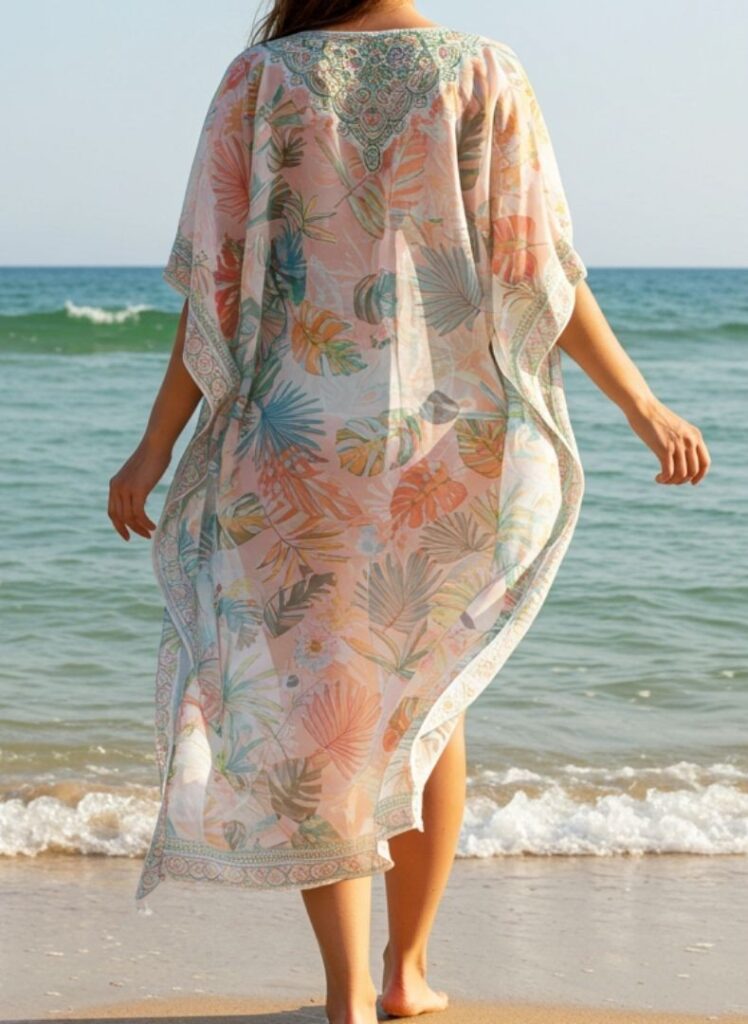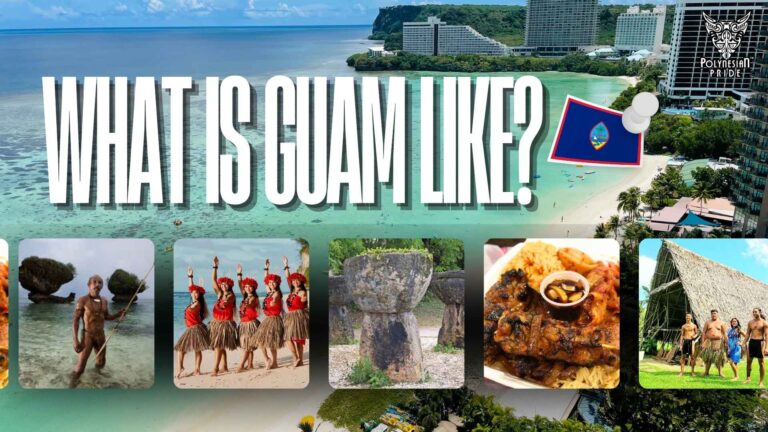Caftan vs Muumuu: What’s the Best Choice for You?

In the realm of comfortable and stylish attire, two garments often come to mind: the caftan and the muumuu. While both are celebrated for their loose-fitting designs and cultural significance, they possess distinct characteristics that set them apart. This article explores the debate of caftan vs muumuu, delving into their origins, designs, cultural importance, and fashion applications to help you determine which best fits your wardrobe.
Caftan vs. Muumuu: Quick Comparison Guide
| Caftan | Muumuu | |
| Cultural Origins | From ancient Mesopotamia; linked to royalty across Middle Eastern and African cultures. | Hawaiian roots; adapted from missionary gowns for tropical comfort. |
| Design & Structure | Long sleeves, a flowy fit, and often belted. | Straight-cut, sleeveless or short sleeves, no waist. |
| Fabrics & Patterns | Luxurious fabrics, ornate details. | Light fabrics, and bold floral prints. |
| Styling & Usage | From formal events to beachwear, it is highly versatile. | Best for casual, at-home, or island gatherings. |
| Fashion Influence | Global fashion staple. | Culturally iconic in Hawaii, less global reach. |
What is a Caftan?
A caftan is a long, loose-fitting robe or tunic with wide sleeves and a flowing silhouette. Traditionally ankle-length, caftans are often made from luxurious fabrics such as silk, chiffon, or brocade and may feature embroidery, beadwork, or decorative patterns. While often worn freely for comfort, they can also be belted at the waist for a more structured look, making them both elegant and versatile.
Historical Origins

The caftan dates back to ancient Mesopotamia, where it was originally worn by royalty and nobility as a symbol of wealth and social status. As it spread across the Middle East, North Africa, and Asia, different cultures adapted its form and styling to suit local tastes and traditions. Today, caftans have been embraced by global fashion—appearing on runways and in resort collections as a staple of sophisticated comfort.
Cultural Significance
In many regions, especially Morocco, Turkey, and parts of West Africa, the caftan holds ceremonial and cultural importance. It’s traditionally worn during weddings, religious holidays, and formal celebrations. Beyond style, it represents modesty, cultural pride, and timeless elegance—blending heritage with high fashion.
Caftan vs. Kaftan: Is There a Difference?
“Caftan” and “kaftan” are simply different spellings of the same garment. Both derive from the Arabic word “qaftan,” and the difference is mostly regional. “Kaftan” is more common in British English, while “caftan” is often used in American or French contexts. Despite the spelling variation, both terms refer to the same iconic piece of clothing: a wide-sleeved, loose robe perfect for lounging, dressing up, or making a fashion statement.
What is a Muumuu?

A muumuu (pronounced “moo-moo”) is a traditional women’s Hawaii dress. Muumuu is known for its loose, unstructured silhouette, often floor-length, and made from lightweight fabrics like cotton or rayon. It typically features bright, floral, or tropical patterns, reflecting the vibrant nature and spirit of the Hawaiian islands.
Want to dive deeper into the history and cultural roots of the muumuu? Don’t miss our full guide on what is a muumuu dress.
Originally worn by women, the muumuu offers breathability and comfort, making it ideal for hot climates and relaxed occasions. Though popular in Hawaii, its easy style has made it a favorite in the mainland U.S. and other tropical regions as loungewear or resort fashion.
Spelling: Muumuu or Moo Moo?
The correct spelling is “muʻumuʻu” in Hawaiian, with ʻokina (glottal stops), but “muumuu” is widely accepted in English. While variations like moo moo or moo moo are common in casual usage, using the correct term shows cultural respect.
A Brief History

The muumuu evolved in the 19th century from the holokū, a missionary-introduced gown. Originally an underdress, it became popular as a comfortable everyday garment. Hawaiian women later wore muumuus to balance modesty and identity while adapting to a Westernized lifestyle—making it both a practical and a cultural symbol of Hawaii.
Are There Other Words for a Muumuu?
While “muumuu” is the most commonly used term for the traditional Hawaiian dress, you can use any of these terms in place of it.
- Hawaiian dress
- Aloha dress
- Polynesian dress
- Floral sundress
Caftan vs Muumuu: Key Differences
While both caftans and muumuus are celebrated for their comfort and flowing designs, they differ significantly in their cultural origins, design elements, fabrics, and usage. Understanding the difference between caftan and muumuu helps in choosing the right garment for your style and occasion.
Cultural Origins & History


- Caftan: Originating from ancient Mesopotamia, the caftan has been embraced by various cultures across the Middle East, North Africa, and Asia. It has historically symbolized royalty and status, with each culture adding its unique touch to the garment’s design.
- Muumuu: The muumuu traces its roots to Hawaii, influenced by Western missionary attire. It evolved from the holokū, a long formal gown, into a more casual, comfortable dress suited to the island’s climate and lifestyle.
Design & Structure


- Caftan: Characterized by wide, long sleeves and a loose-fitting design, caftans often feature a V-neck or deep neckline. They can be belted at the waist to create a more defined silhouette or worn unbelted for a relaxed fit.
- Muumuu: Typically sleeveless or with short sleeves, muumuus have a simple, straight-cut design without a defined waist. This unstructured form emphasizes comfort and ease of movement, making it ideal for warm climates.
Fabric & Patterns


- Caftan: Often made from luxurious materials like silk, chiffon, or brocade, caftans are adorned with intricate embroidery, metallic embellishments, or elaborate patterns. These decorative elements reflect the garment’s historical association with royalty and ceremony.
- Muumuu: Constructed from lightweight fabrics such as cotton or rayon, muumuus are known for their vibrant floral or tropical prints. These patterns embody the lively and natural beauty of the Hawaiian islands, aligning with the garment’s casual and relaxed nature.
How They Are Worn


- Caftan: Versatile in nature, caftans can be styled for both formal events, such as weddings and galas, and casual settings, like beach outings or resort wear. Their adaptability allows them to be dressed up with accessories or kept simple for a minimalist look.
- Muumuu: Primarily associated with casual and informal settings, muumuu is ideal for home wear, beach outings, or cultural gatherings in Hawaii. They epitomize relaxation and are less commonly seen in formal contexts.
Fashion Influence & Popularity


- Caftan: Embraced by the fashion industry, caftans have appeared on runways and are favored by celebrities for their elegance and comfort. Designers often reinvent caftans, blending traditional elements with contemporary trends, which has helped maintain their popularity across different cultures and fashion eras.
- Muumuu: While deeply significant in Hawaiian culture, muumuu has a more localized fashion presence. They are cherished for their comfort and cultural representation but have not achieved the same global fashion prominence as caftans.
Similarities Between a Caftan and a Muumuu
Despite their differences, caftans and muumuus share several similarities:
- Comfort: Both garments are designed for comfort, offering loose fits that allow for ease of movement and breathability.
- Cultural Significance: Each holds a special place in their respective cultures, reflecting traditions, history, and social values.
- Versatility: Both can serve as vacation attire, loungewear, or beachwear, catering to those seeking stylish yet comfortable clothing options.
When to Wear a Caftan vs. a Muumuu
Best Occasions for Wearing a Caftan



Formal Events:
Caftans made from silk or brocade with intricate detailing are perfect for upscale occasions like weddings, evening galas, or religious celebrations. Their flowing silhouette and regal appearance offer effortless sophistication.
Resort & Beachwear:
Lightweight caftans make stunning vacation outfits and beach cover-ups. Their elegant drape offers sun protection and a chic alternative to traditional swimwear layers.
Stylish Loungewear:
At home, a caftan combines comfort with polish. Add statement jewelry or a waist belt, and it instantly becomes a glamorous outfit for entertaining or relaxing in style.
Best Occasions for Wearing a Muumuu



Everyday Homewear:
Muumuu dresses are ideal for daily use—whether you’re lounging, cooking, or hosting a casual get-together. The loose fit keeps you comfortable all day without compromising style.
Hawaiian Luaus & Summer Parties:
Known for their vibrant prints and tropical flair, muumuus are a go-to choice for summer celebrations, luaus, or themed garden parties. They radiate cheerful, island-inspired energy.
Maternity & Inclusive Fashion:
With their breezy, non-restrictive silhouette, muumuus are beloved by expectant mothers and anyone who prefers size-flexible, breathable garments. They provide comfort without sacrificing beauty.
How to Style a Caftan vs. a Muumuu
Both the caftan and muumuu offer endless styling possibilities. Whether you’re aiming for elegance or effortless island charm, here’s how to make each look shine.
Styling a Caftan

Go Bold with Accessories
Elevate the drama of a caftan by pairing it with statement jewelry—think chandelier earrings, chunky bangles, or layered necklaces. Let your accessories reflect the richness of the fabric.
Add Shape with a Belt
Though flowy by design, a caftan can be cinched at the waist with a slim or wide belt to create a flattering silhouette. This adds polish and structure, especially for formal settings.
Dress It Up
Pair your caftan with jeweled sandals or strappy heels. Add a coordinating clutch and a silk headscarf or turban for a glamorous, editorial-worthy look.
Styling a Muumuu

Keep It Relaxed & Airy
Let the muumuu do what it does best—flow freely. Wear it with simple flip-flops, barefoot on the beach, or with cushioned slides for casual comfort.
Layer for a Modern Twist
For a street-style edge, throw on a denim jacket, cropped cardigan, or lightweight kimono. It’s a great way to make the muumuu feel city-ready without losing its charm.
Embrace Island Vibes
Top off your look with a wide-brimmed straw hat, oversized sunglasses, and a flower tucked behind your ear. Shell jewelry or woven accessories can add an authentic tropical finish.
Which One Is Right for You?
- Choose a caftan if you love elegant silhouettes, luxurious fabrics, and versatility from casual beachwear to black-tie events.
- Choose a muumuu if you prefer relaxed comfort, vibrant island style, and cultural authenticity for homewear, travel, or summer fun.
- Consider your personal style, the occasion, and the climate—both garments offer beauty and ease but serve different moods and lifestyles.
Where to Buy Caftans and Muumuus
Caftans:
- Global Fashion Retailers: Net-a-Porter, ASOS, Free People, and Anthropologie carry modern and bohemian-inspired caftans.
- Cultural Designers: Seek out Moroccan or Middle Eastern boutiques for authentic, handmade caftans with traditional embellishments.
- Luxury Brands: Designers like Oscar de la Renta, Camilla, and Diane von Furstenberg frequently include caftans in their resort collections.
Muumuus:
- Hawaiian Brands: Try Hilo Hattie, Manuheali‘i, and Mu‘umu‘u Heaven for locally made, culturally inspired muumuus.
- Online Retailers: Amazon, Etsy, and Zappos offer a wide range of vintage to modern designs.
- Plus-Size & Maternity Stores: Muumuus are popular in comfort-focused collections, often featured in specialty sizing outlets.
CONCLUSION
Caftan vs. Muumuu—two garments, two stories, and two very different styles that share a love for comfort, culture, and effortless beauty. While the caftan carries a regal legacy rooted in ancient civilizations and formal elegance, the muumuu reflects the laid-back charm and vibrant spirit of Hawaiian life.
Whether you’re looking to make a fashion statement at a formal event or seeking the perfect breezy dress for a beach day or relaxed homewear, understanding the differences between a kaftan vs muumuu helps you choose a piece that aligns with your style, climate, and occasion.
In the end, you don’t have to pick just one. Embrace both—because fashion isn’t just about what you wear; it’s about the story your clothes tell.
FAQs
1. What’s the difference between a caftan and a muumuu?
A caftan is a long, narrow-cut robe with full sleeves, often featuring an open front or deep neckline—originating from ancient Mesopotamia. A muumuu, from Hawaii, is a loose, unstructured dress with a yoke-less neckline, usually short-sleeved or sleeveless. Understanding the difference between kaftan and muumuu can help you choose the perfect style for any occasion.
2. What is the difference between kaftan and caftan?
There’s no difference—“kaftan” and “caftan” are just alternate spellings of the same garment. The choice depends on regional usage (British vs. American English).
3. Why is it called a muumuu?
The Hawaiian word “muʻumuʻu” means “cut off”, referring to the original design which lacked a yoke. It started as a simpler underdress and became a signature everyday dress.
4. Is a muumuu a caftan?
No. A muumuu is Hawaiian, short-sleeved, and unstructured. A caftan is Middle Eastern, with long sleeves and a more formal, robe-like design.

I am a cultural historian and editor with over 10 years of research into pre-contact Polynesian history, the Lapita migration, and oral traditions. Share the excitement of my latest publications.
My contact:
Email: [email protected]
Tel: +64 21 456 7890






